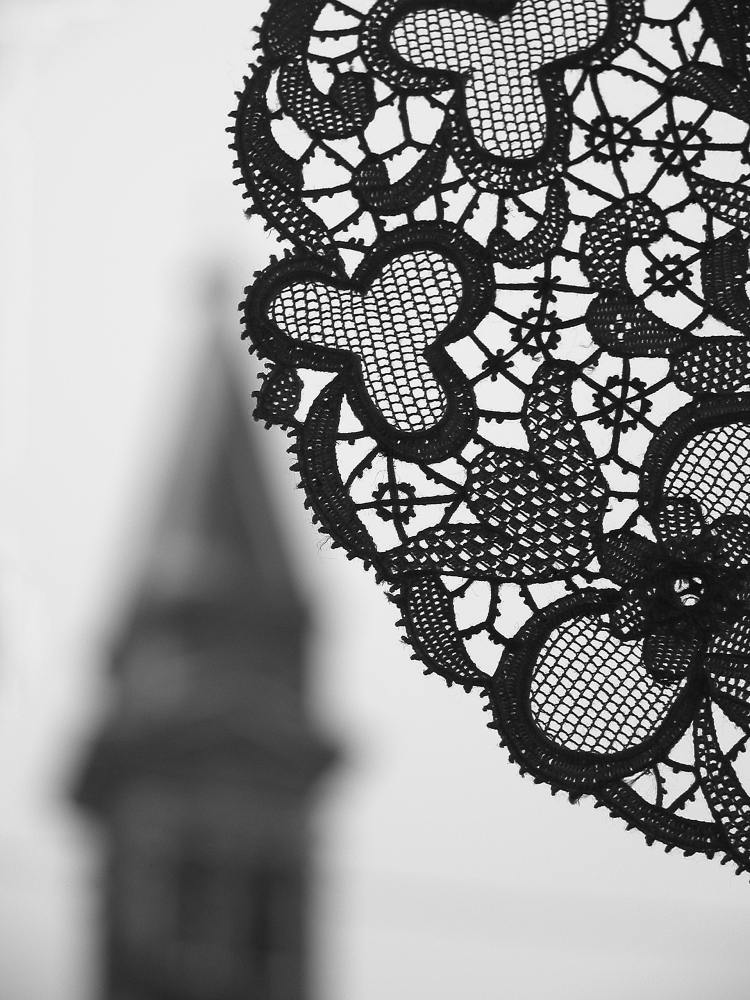Lace

The Belle sighs, sad and comfortless; her beloved is far by now, in the East, and to her an alga stays only, which her young crusader gave to her. But the alga, a marine creature, has ephemeral life and, day after day, the young girl in love feels the danger of loosing the only tangible memory of her love, while the desire of keeping it for a long time becomes more intense. From such a loving sufferance, she had the idea of reproducing the alga on the father's net, a fisherman; she takes the needle and the miracle is fulfilled. In this romantic way the first lace of Burano was embroidered. Historically the lace appears in Venice in the XV century and the first record is found in a picture of Carpaccio (1456-1526). Quite precise records on the origin of the art of embroidery point out Magna Greece and Asia Minor as the origin places from where the art of lace probably reached Venice. According to a common opinion, the worth of lace diffusion, toward the end of XVI century, is attributed to the Dogaressa Morosina Morosini, wife of the Doge Marino Grimani; but already a century before, in 1473, to king Richard III from England, who in the day of his crowning wore a "triumph of lace" coming from the Venice lagoon. The year 1537 is generally indicated as the beginning of this type of working that made the island really famous. Out of the small one or two floor houses, whose colors (according to the poet Diego Valeri) "shine also against the sun, so that the waters of the canals, reflecting the houses, multiply its beauty", sit groups of women "buranelle" and thanks to their fast and magic hands come, as for enchantment, those marvels that, by now remote times, were used in the clothes of Kings and Queens like Luigi XIV, who in the occasion of his crowning wanted a "collar of white hair", and like the English Queen Mary of Tudor and the Queen of France, Caterina de'Medici (1519-1589). The crisis that followed the fall of the Serenissima in the years between the end of XVIII and the beginning of XIX century, reached Burano too and in a few years the activity (that made the embroiderer famous) decreased so much in importance that it became nonexistent, together with the last old embroiderers, the secret of the "Point in Air" that makes the Burano's lace insurpassable. The art of lace at the beginning of XIX century sees its decadence after being for more than 300 years the pride of Venice, city that claimed the paternity of this work of art. The end of Serenissima marks the disappearance, from the islands of the lagoon, the lace of which some artefacts are to be found as unique cases in the island of Burano from around 1845.
 English
English
 Italiano
Italiano 
